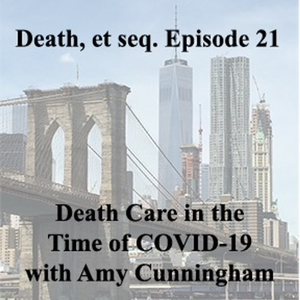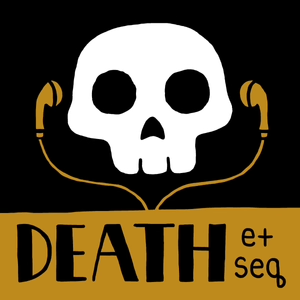
Death, et seq.
Tanya D. Marsh
All episodes
Best episodes
Top 10 Death, et seq. Episodes
Goodpods has curated a list of the 10 best Death, et seq. episodes, ranked by the number of listens and likes each episode have garnered from our listeners. If you are listening to Death, et seq. for the first time, there's no better place to start than with one of these standout episodes. If you are a fan of the show, vote for your favorite Death, et seq. episode by adding your comments to the episode page.

07/23/18 • 56 min
One of my major goals with this podcast is to introduce listeners to a variety of perspectives on the funeral industry and changing death practices. In Episode 3, I talked to Dan Isard, who is a management and financial consultant to funeral homes. In Episode 4, I talked to Caitlin Doughty, who is a non-traditional funeral director in Los Angeles with a critique to the status quo. In the next few weeks you’ll hear from Lee Webster, who has been very active in the home funeral and green burial movements, and from Amy Cunningham, who takes a very thoughtful and non-traditional approach to her second career as a funeral director.
Several questions have emerged from my conversations with these folks, and some fundamental tensions have been revealed in their answers to these questions. Are funerals for the living or the dead? What is a “good” funeral? Are people less interested in rituals than they were before and, if so, why? What are the pressures facing the funeral industry and how should the industry react? Today’s podcast touches on many of these questions, from the perspective of a long-time leader of a funeral and cemetery industry trade association.
There are three major trade associations that represent participants in the funeral and cemetery industries in the United States – The National Funeral Director’s Association, known as NFDA, the Cremation Association of North America, known as CANA, and the International Cemetery, Cremation, and Funeral Association, known as ICCFA. ICCFA was founded in 1887 as the Association of American Cemetery Superintendents. Today it has more than 9,000 member businesses representing all segments of the cemetery, funeral services, cremation, and memorialization profession.
Today’s podcast features my conversation with Bob Fells, who is the General Counsel of ICCFA. Bob was formerly the Executive Director and General Counsel of ICCFA, retiring from his role as Executive Director in 2017. Bob joined the staff of ICCFA in 1983 and has been working on behalf of the funeral service profession on legal and legislative issues since 1975.

Episode 2: "What Happens to Human Remains in the U.S.?"
Death, et seq.
06/25/18 • 37 min
Whenever people ask me what I do, and I tell them that I research, teach, and write about the law of human remains, their first response is to say “uuuh.” And their second is to say “I’ve always wondered...” America is a uniquely death denying culture, which is perhaps why we know so little about what follows death. Not in the spiritual sense...but in the physical sense. What happens to human remains after death in the United States?
Death is sometimes tragic, sometimes a blessing — always inevitable. Death transforms a living human being, a person with rights and autonomy, into ... something else. Tissue and bone, once animated by life, converted into an object of fear, a focus for grief, and a medical and scientific resource. A human cadaver is no longer a person, but neither is it an object to be easily discarded.
Human remains occupy an uneasy position in U.S. law, and their existence raises three fundamental questions. The first question compels our behavior and requires us to act: what, if anything, must be done with human remains? The second question circumscribes our behavior and discourages action: what cannot be done with human remains? The third question seeks to set normative expectations for our behavior: what should be done with human remains?
These are questions that we will address in this podcast, not only in terms of what the law IS, but in terms of what we think the law OUGHT to be. This means that we have to think about a lot of things that most of us don’t really want to think about. But I promise it gets easier. Confronting the reality of human remains and the social norms and laws surrounding them is both a unromantic practical exercise and a deeply spiritual one. I promise that it’ll be worth it.
I want to start out the podcast the same way I start each new semester of my funeral and cemetery law class at Wake Forest — by talking about a series of real life cases that which I think raise some of the fundamental issues that we’ll be tackling throughout the podcast. And I thought it would be more interesting if my 17 year old son Liam Sherman helped me out by giving his initial impressions of each case.
For further show notes or to submit questions or comments, please visit the website www.deathetseq.com.

02/04/19 • 52 min
Estate planning should involve more than simply creating the appropriate documents to address who will receive your property after your death. Modern estate planning also includes some planning for a period of time prior to death, particularly if circumstances arise that a person cannot manage their own property or cannot make health care decisions for themselves. The vast majority of people will die after a period of some incapacity. If that period is short, then there are few problems. But because that period can be months or even years, many people want to make arrangements with respect to their property and health care in case the need arises.
There are three basic documents for planning for the period of incapacity that Jonah Bamel, Greg Volk and Tanya Marsh discuss in this episode: (1) a health care proxy or health care power of attorney; (2) living will or advance directive; and (3) durable power of attorney.
Visit www.deathetseq.com for links to additional resources.
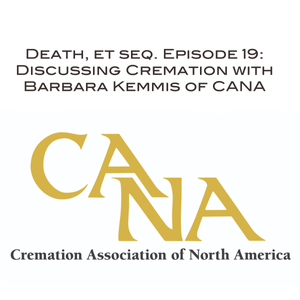
01/14/19 • 67 min
On this week’s episode, I am happy to share with you a conversation that I recently had with Barbara Kemmis, the Executive Director of the Cremation Association of North America, or CANA. Cremation is on the rise in the United States. As Barbara will explain, after it was legalized in a handful of states in the 1870s, it took about a century for the cremation rate to hit 5% in this country. For the past several years, cremation has been a more popular option in the United States than burial, which represents a seismic shift in American disposition practices. Barbara and I will discuss the rising cremation rate, some of the reasons that people have been embracing cremation, and research conducted by CANA regarding correlations between demographic information and the cremation rate. I also ask Barbara about the environmental impacts of cremation and she shares some of the research that CANA has done in that area as well.
To learn more:
Industry Statistics: https://www.cremationassociation.org/page/IndustryStatistics
Roaming/Rooted Blogpost Link: https://www.cremationassociation.org/blogpost/776820/280926/Enhanced-Statistics-Enhance-Your-Business-Success
Link to all posts about stats: https://www.cremationassociation.org/blogpost/776820/The-Cremation-Logs?tag=statistics
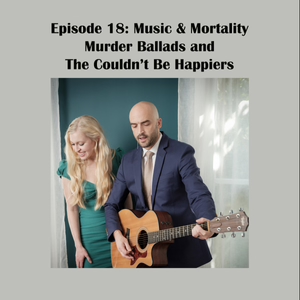
01/07/19 • 49 min
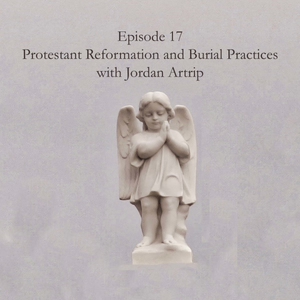
Episode 17: The Impact of the Protestant Reformation on Burial Practices (with Jordan Artrip)
Death, et seq.
01/07/19 • 46 min
The Protestant Reformation of the early 16th century changed countless aspects of everyday life for every kind of person across Europe. One of the things most profoundly affected was the popular conception of death. On this episode, I will be speaking with third year Wake Forest University Law School student Jordan Artrip about how the theology of the Reformation caused a paradigm shift for how death and the dead were viewed by society, as well as the practical effects of that shift on life and religious practice.
Topics addressed in episode:
- For everyday people living during Christendom, one’s view of death and the dead was inextricably linked to the teaching of whichever church was dominant in their particular time and region. How did the theology of the Medieval Church shape peoples’ view of death and the dead on the eve of the Reformation?
- How did this belief in purgatory and the efficacy of intercessional prayer manifest itself in the practices of the Church regarding the dead?
- How did changes brought by the Reformation impact the level of memorialization that we see today in churches?
- How did changes in theology impact local burial practices?
- How did practices change in areas of Europe where the Catholic Church remained dominant?
- What impact did the Reformation and related changes in burial practices in Christian Europe have on the development of the law and social norms in the United States?
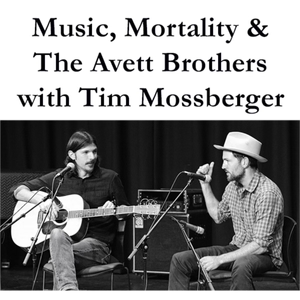
11/03/18 • 80 min
About a month ago, I sat down with my friend Tim Mossberger in Champaign, Illinois to talk about our mutual favorite band, The Avett Brothers, and a bunch of their songs that deal with topics related to mortality.
Tim has a website called As My Life Turns to a Song – The Avett Brothers Archive. He has been methodically collecting and documenting the history of the band, and together with Paul Oehler has created an Avett setlist database that is as comprehensive as possible. And with me, Tim has created Tales of Avett News, a blog where we publish concert reviews, interviews with Avett fans and people connected with the band, and other content of interest to Avett fans.
In this episode, Tim and I discuss a number of Avett Brothers songs that deal with various aspects of mortality including:
The Fall
Talk on Indolence
The Lowering
Die Die Die
Another Youngster
Am I Born to Die (cover)
Live and Die
Life
Through My Prayers
Once and Future Carpenter
Morning Song
Murder in the City
No Hard Feelings

07/30/18 • 41 min
Lee Webster discusses her educational and advocacy efforts in the "neo-traditional" home funeral and green burial movements.
Links to organizations and resources mentioned in this episode:
National Home Funeral Alliance
New Hampshire Funeral Resources, Education & Advocacy
Selected quotes:
- Home funerals are “family led and family directed.”
- “We don’t recognize death as an emergency.”
- “One of the main characteristics of a home funeral is that it’s okay for people to look dead. We’re taking the time to be present and nearby and to engage with what’s happening. It’s taking the time to be with them.”
- In green burial, “we do nothing to impede decomposition. That’s pretty basic. No concrete, no metal, no exotic woods, no embalming, no toxic chemicals of any kind. We are letting nature take its course at its own pace.”
- “Green burial is bringing back ritual to a society that has been losing it because we’ve been trying to avoid the heavy costs of funerals and going with direct cremation.”
- We want people to think about “what is truly authentic about the life of the person they’re honoring.”
- "Funeral reform is very much needed. There are certain practices within the industry itself that do need change in a very big way."
- “People are hungering for this information.”
- "One of the largest issues for me is simply access."
- "The sooner we can get grassroots activism going, the sooner this will all be a moot issue."
- "The Catholic Church is really leading the way in green burial because we're getting back to full body burial. They never wanted cremation."
- "Unitarian Universalists, from the very beginning, have been big leaders in funeral reform."
Show more best episodes

Show more best episodes
FAQ
How many episodes does Death, et seq. have?
Death, et seq. currently has 22 episodes available.
What topics does Death, et seq. cover?
The podcast is about Society & Culture, Religion & Spirituality, Podcasts and Death.
What is the most popular episode on Death, et seq.?
The episode title 'Episode 21: Death Care in the Time of COVID 19 with Amy Cunningham' is the most popular.
What is the average episode length on Death, et seq.?
The average episode length on Death, et seq. is 47 minutes.
How often are episodes of Death, et seq. released?
Episodes of Death, et seq. are typically released every 7 days, 1 hour.
When was the first episode of Death, et seq.?
The first episode of Death, et seq. was released on Jun 19, 2018.
Show more FAQ

Show more FAQ

